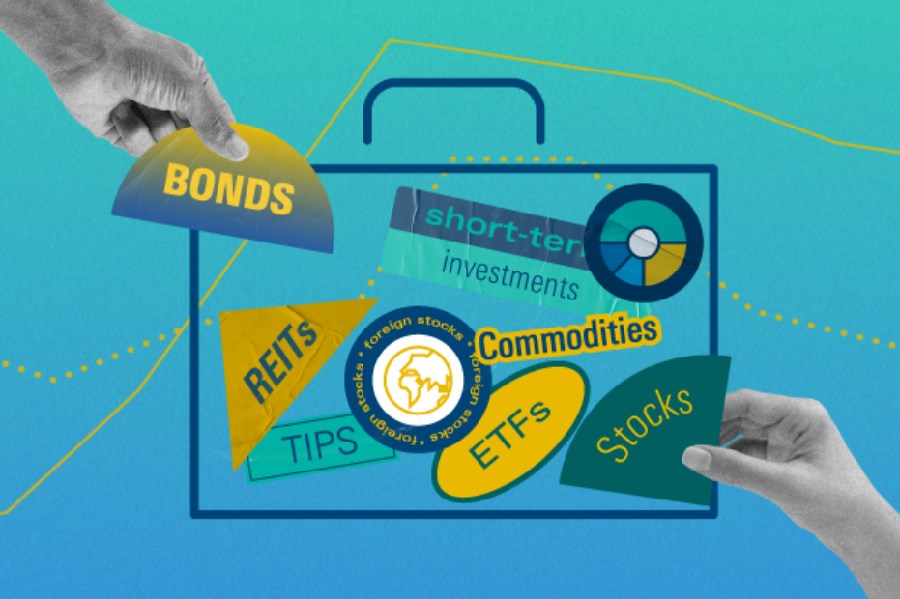
When stock markets face headwinds, as they are doing now, some investors seek out different types of assets to diversify their portfolios. The problem is, diversifying an investment portfolio shouldn't be something an investor does only when stock markets fall. In fact, over the short-term, portfolio diversification might not always work as investors expect.
“One of the cruel facts about portfolio diversification is that it may or may not pay off in any given period,” says Amy Arnott, Morningstar portfolio strategist. In fact, during periods of market stress, many asset classes drop in tandem. Despite that, professional investors see diversification as a prudent long-term strategy.
By diversifying holdings across different asset classes, investors reduce exposure to the systemic risks of any one asset class. Thus, if a market crash sends the prices of all the stocks in a portfolio tumbling, other uncorrelated assets may not lose value at the same time, providing additional stability.
It’s a Hard Time for Diversification
Diversification has often been called the only free lunch in investing but can be difficult to implement. The Morningstar’s 2022 Diversification Landscape Report shows that diversifying a portfolio is becoming more challenging.
“What we saw is that in 2021 correlations actually decreased for a lot of major asset classes when measured against U.S. stocks,” explains Arnott. “But at the same time, it was a very bullish market environment for most of the year. So, you had stocks up about 26% for the year. So, because of that, diversifying into bonds did not improve returns in 2021. Adding other asset classes that people often look to for diversification value, like international stocks and gold, also didn't improve performance.”
Looking back at the period from 2011 to 2020, bonds were actually much better diversifiers. “Adding bonds to an equity-only portfolio would have reduced your return slightly, but also really significantly decreased risk.”, says Arnott. “So, overall, you ended up with better risk-adjusted returns. And that was also the case specifically during 2020, especially during the market correction in February and March. One interesting thing is the most generic type of diversified portfolio, what people often refer to as a 60-40 mix of large-cap stocks and investment-grade bonds, actually did very well during that 10-year period. So, adding a lot of specialized asset classes, like international stocks, or commodities, or gold, didn't necessarily improve your results as much as just a plain-vanilla mix of stocks and bonds.”
Correlation Shifts over Time
The landscape is changing now because inflation is spiking, and monetary policy is tightening. The Russian invasion of Ukraine and increasing geopolitical risks further complicate matters. Investors looking to build diversified portfolios must recognize the challenges of shifting correlations over time.
Correlation coefficients are indicators of the strength of the linear relationship between two different securities or asset classes, x and y. A linear correlation coefficient that is greater than zero indicates a positive relationship. A value that is less than zero signifies a negative relationship. Finally, a value of zero indicates no relationship between the two variables x and y.
The problem is that correlation coefficients shift over time, so what worked in the past won’t necessarily work in the future. In addition, adding asset classes to reduce volatility can also drag down returns, sometimes over multiyear periods. Moreover, asset-class correlations often climb during periods of market crisis--exactly when you need diversification the most.
Looking at both short and long term, Morningstar research suggests that fixed-income securities--including cash, short-term bonds, and longer-term bonds, especially higher-quality bonds--were the best diversifiers. Gold actually did relatively well as a portfolio diversifier. Other commodities were fairly good diversifier in the past, but over the past several years, their correlations have actually trended up.
What Can You Buy, Apart from Stocks and Bonds?
Investors are also looking for diversification in alternative strategies to reduce drawdowns, seeking a wider breadth of risk factors or asset classes, and for more portfolio stability. “In eight out of the past 10 calendar years, all seven alternative Morningstar Categories underperformed the Morningstar US Market Index, often by substantial margins,” says Emory Zink, associate director for Morningstar. “However, in periods of intense market selloffs like the one seen in January, all seven alternatives categories lost less than the Morningstar US Market Index, and in some cases delivered positive returns. Overall, most alternative strategies have shown significantly less downside risk than broad equity market benchmarks.”
Morningstar research suggest that over longer periods, most alternative categories have shown close correlations with equities but arguably very low levels of equity beta. This means that the returns of these alternatives categories are not primarily driven by moves in the equity market. “From a portfolio construction perspective, though, investors must remember that it is the impact of the low equity beta that has a stronger effect on portfolio performance than that of correlation,” says Zink.
Is it Time to Buy Cryptocurrencies?
Cryptocurrencies are different from most other asset classes in the sense that there are no underlying cash flows, which can make it very difficult to value, and they are an asset that exists purely in digital form. Because of that, the correlations between cryptocurrency and almost any other asset class has been very low. But they are extremely volatile and the volatility can completely overshadow the diversification value.
“For example, last year, we had Bitcoin increasing 100% in the first quarter and then losing 40% of its value in the second quarter,” says Arnott. “Even though theoretically cryptocurrencies could be good portfolio diversifier, the volatility makes it very difficult for a lot of people to use effectively in a portfolio”.








:quality(80)/cloudfront-us-east-1.images.arcpublishing.com/morningstar/MNPB4CP64NCNLA3MTELE3ISLRY.jpg)










